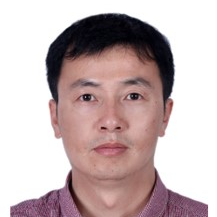Recent Developments of Non-ferrous Alloys: Processing, Microstructure and Properties
A special issue of Metals (ISSN 2075-4701). This special issue belongs to the section "Structural Integrity of Metals".
Deadline for manuscript submissions: closed (30 September 2023) | Viewed by 17522
Special Issue Editor
Interests: Al alloy; high entropy alloy; advanced characterization; advanced powder metallurgy
Special Issues, Collections and Topics in MDPI journals
Special Issue Information
Dear Colleagues,
With the development of modern technology, the growing demand for advanced non-ferrous alloys (Aluminium, Copper, Nickel, Lead and Zinc, etc.) drives the development of the non-ferrous metallurgy industry. Moreover, non-ferrous alloys play a key role in many high-tech fields and promote the development and progress of industrial countries. Advanced non-ferrous alloys with excellent properties (high strength, excellent ductility, good wear resistance and corrosion resistance, etc.) are also widely used in various fields, such as automobiles, electronics, aviation, aerospace and biomedicine.
Thus, by covering all types of non-ferrous alloys, this Special Issue aims to provide better assessments of advanced non-ferrous alloys, including alloy design, processing methods, microstructure characterization, properties and application potentials.
Prof. Dr. Hailin Yang
Guest Editor
Manuscript Submission Information
Manuscripts should be submitted online at www.mdpi.com by registering and logging in to this website. Once you are registered, click here to go to the submission form. Manuscripts can be submitted until the deadline. All submissions that pass pre-check are peer-reviewed. Accepted papers will be published continuously in the journal (as soon as accepted) and will be listed together on the special issue website. Research articles, review articles as well as short communications are invited. For planned papers, a title and short abstract (about 100 words) can be sent to the Editorial Office for announcement on this website.
Submitted manuscripts should not have been published previously, nor be under consideration for publication elsewhere (except conference proceedings papers). All manuscripts are thoroughly refereed through a single-blind peer-review process. A guide for authors and other relevant information for submission of manuscripts is available on the Instructions for Authors page. Metals is an international peer-reviewed open access monthly journal published by MDPI.
Please visit the Instructions for Authors page before submitting a manuscript. The Article Processing Charge (APC) for publication in this open access journal is 2600 CHF (Swiss Francs). Submitted papers should be well formatted and use good English. Authors may use MDPI's English editing service prior to publication or during author revisions.
Keywords
- advanced structural characterization
- high strength/toughness alloy
- advance functional alloy
- advanced manufacturing process





